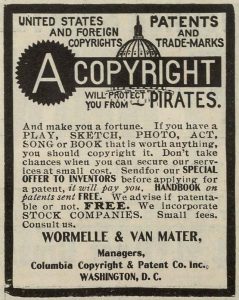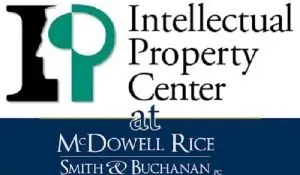Copyright Infringement
In general, copyright infringement occurs when a copyrighted work is reproduced, distributed, performed, publicly displayed, or made into a derivative work without the permission of the owner of the copyrighted material. Since 1978, rights under copyright exist upon automatically upon fixation of the work in a tangible form of express. This means that since 1978, registration of a copyrighted work is not required. However, to bring an infringment action, registration of the work is now required.

Historically, some confuse the concept of a “Poor Mans’ Copyright” and the 30% Rule. The Poor Man’s copyright is the act of a mailing a copy of your work to yourself so that you have a USPS-stamped, sealed envelope with a copy of the material you created. A Poor Man’s Copyright is typically used for evidentiary purposes at a later time.
The 30% Rule
In the realm of copyright protection, the concept of the “30% rule” has been a persistent point of confusion for laypeople. This notion suggests that if you modify or transform an original work by more than 30%, you have effectively created a new and original work, thereby avoiding copyright infringement. However, this rule is a misconception and does not have any basis in the copyright law.
Debunking the Myth
The idea of a 30% rule for copyright protection is a fallacy. Someone who reproducing another works, without authorization is subject to liablity. Any copying can result in a claim of infringement. Copyright law does not provide an exception based upon a specific percentage or limitation of amount copied. The confusion on percentages is based upon a concept in copyright law known as the Fair Use Doctrine. Under the Fair Use Doctrine, courts looks a number of factors to determine whether there is a justification for the copying that promotes one of the underlying functions of copyright law. One of the Fair Use factors includes the amount and substantiality of the portion used in relation to the copyrighted work as a whole.
4 Fair Use Factors Considered in Copyright Infringement
When assessing copyright infringement, courts typically consider the following factors:
-
Effect of the use upon the potential market for the copyrighted work. One of the factors the courts look at in a Fair Use analysis is whether, to what extent, the unlicensed use harms the copyright owner or the market for the copyright owner’s work. If the use would help increase the market for the work, the unlicensed use may be viewed more favorably in contrast to one where it completely errodes or supplants the copyright owner’s revenue stream such as a royalty or license fee.
-
Nature of the Copyrighted Work: This factor looks at the nature of the original work. Using a work which involved highly creative or imaginative works is less likely to support a claim of fair use in contrast with a highly factual work such as a news worth item or technical work. Sometimes these are referred to as thick versus thin works. In addition, if the author is attempting to extend copyright protection to an idea versus the original expression of an idea which is not protected, the courts will limit its application.
-
Purpose and Character of the Use: The purpose for which the allegedly infringing work was created can also influence the infringement analysis. For example, nonprofit educational or noncommercial uses may have greater benefits to society. Additional, a transformative use, which involves creating a new work that significantly alters the original work for a different purpose, may be considered fair use under copyright law.
-
Amount and Substantiality of the Copying: The amount of the original work that has been copied is also considered. Even if the amount copied is relatively small, it may still constitute infringement if it constitutes a substantial portion of the original work’s protectable elements.
The Role of the 30% Rule
Unfortunately, the internet has led to a proliferation of the misguided understanding and application of the 30% rule. The only safe way to avoid infringement is to not infringe. If you want to avoid liablity for using someone’s work, you should independently create your own work of art. While you can certainly be inspired by or draw ideas from others, you should create your own work of art without incorporating portions of another’s artwork into your work.
Protecting Your Work and Avoiding Infringement
If you have questions about an work or would like to protect your original creative work, you should contact one of our copyright attorneys.
For example, some good practices when citing or using original copyrighted works for inspiration in published works:
-
Understand the Scope of Copyright Protection: Familiarize yourself with the elements of copyright protection and the limitations of the fair use doctrine.
-
Cite Sources Properly: When using copyrighted material for inspiration or factual statements, always provide proper attribution and citations to the original source.
-
Obtain Permission for Use: If you wish to use copyrighted materials, obtain permission from the copyright holder.
-
Consult with an Attorney: For any questions or concerns regarding copyright matters, consult with an experienced copyright attorney to ensure compliance with copyright law and protect your rights.


